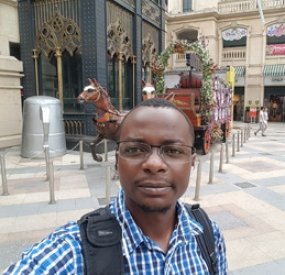By Kudzaishe Mhou
The 2017 2nd Asia-Pacific Conference on Intelligent Robot Systems (ACIRS 2017) held in Wuhan China at the China University of Geosciences (Wuhan) was a conference dedicated to issues relating to intelligent robot systems.
The conference consisted of 68 papers which were accepted from 132 papers submitted by academic scientists, industrial researchers and engineers from across the globe. All papers that were presented went through a peer review process by international reviewers and the conference committee. The quality of the research and its relevance to the conference were part of the criteria used by the reviewers when selecting the papers for presentation.
This conference was an opportunity for different researchers in the same field of study from across the globe to share ideas and get advice from specialists and experts in various fields about intelligent robot systems. The presentations were divided into four sessions which were grouped according to different topics.
I presented a paper titled “Face spoof detection using light reflection in low to moderate lighting” which combined concepts from computer vision and robotics. My talk highlighted research conducted on detecting individuals presenting spoof (false biometric) data when authenticating using face recognition.
The spoof data which we considered during this research included data from direct attacks using photographs and replay attacks using images on digital devices. Making use of the idea that every object reflects light differently because of the difference in the texture of the object, we built a model using four different algorithms. The algorithms in our model included Gabour filters, Laplacian variance, Colour moments and Local Binary Patterns.
During our research, we quickly discovered that demographics and variations in light affected the ability of the face detection algorithm we used in our study thus it prompted us to create a new dataset named KM-FSD. This dataset consisted of 50 different individuals collected from various light sources to test for light variants.
During testing, the algorithm performed well achieving an average of 75% accuracy. Even though this result does not scale to alternative systems for spoof detection, it was an initial step in proving that our novel approach has great potential. Another result was the ability of the system to detect specific spoofs like cut photo attacks which most baseline spoof detection systems fail to identify.
At the end of the conference, researchers were awarded certificates of attendance as well as best research presentations. I was fortunate enough to receive an award for the Best Oral Presentation in the ACIR conference! It was a great and unexpected moment.
I am very grateful to DVT for the support I received to present at the Asia-Pacific Conference.
To read more about the conference, go to: http://www.acirs.org/index.html.


